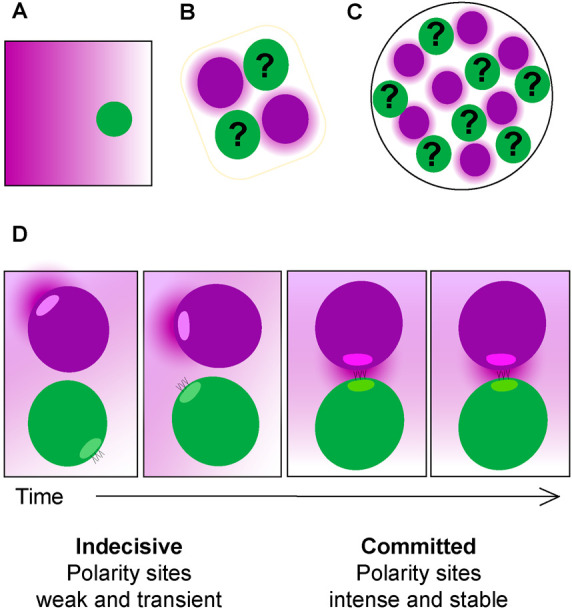FIGURE 1:

Pheromone landscapes encountered by yeast cells. (A) Stable unidirectional pheromone gradient, as generated by micropipette or microfluidics device. (B) Germinating spores in an ascus, where two potential partners (magenta) are expected to generate similar α-factor gradients, making them equally attractive to the a cells (green). (C) Microcolony containing a mixture of a (green) and α cells (magenta). The proximity of multiple potential partners complicates the task of orienting toward a single partner. (D) Exploratory polarization model of partner selection. During the indecisive period (frames 1 and 2), diffusion of pheromone released at the α cell’s (magenta) polarity site yields a low pheromone concentration at the a cell’s (green) polarity site. When the two polarity sites are apposed (frames 3 and 4), the a cell senses a high concentration of pheromone. Both cells sense and secrete pheromone, but for simplicity, only the a cell’s receptors and α cell’s pheromone are shown.
